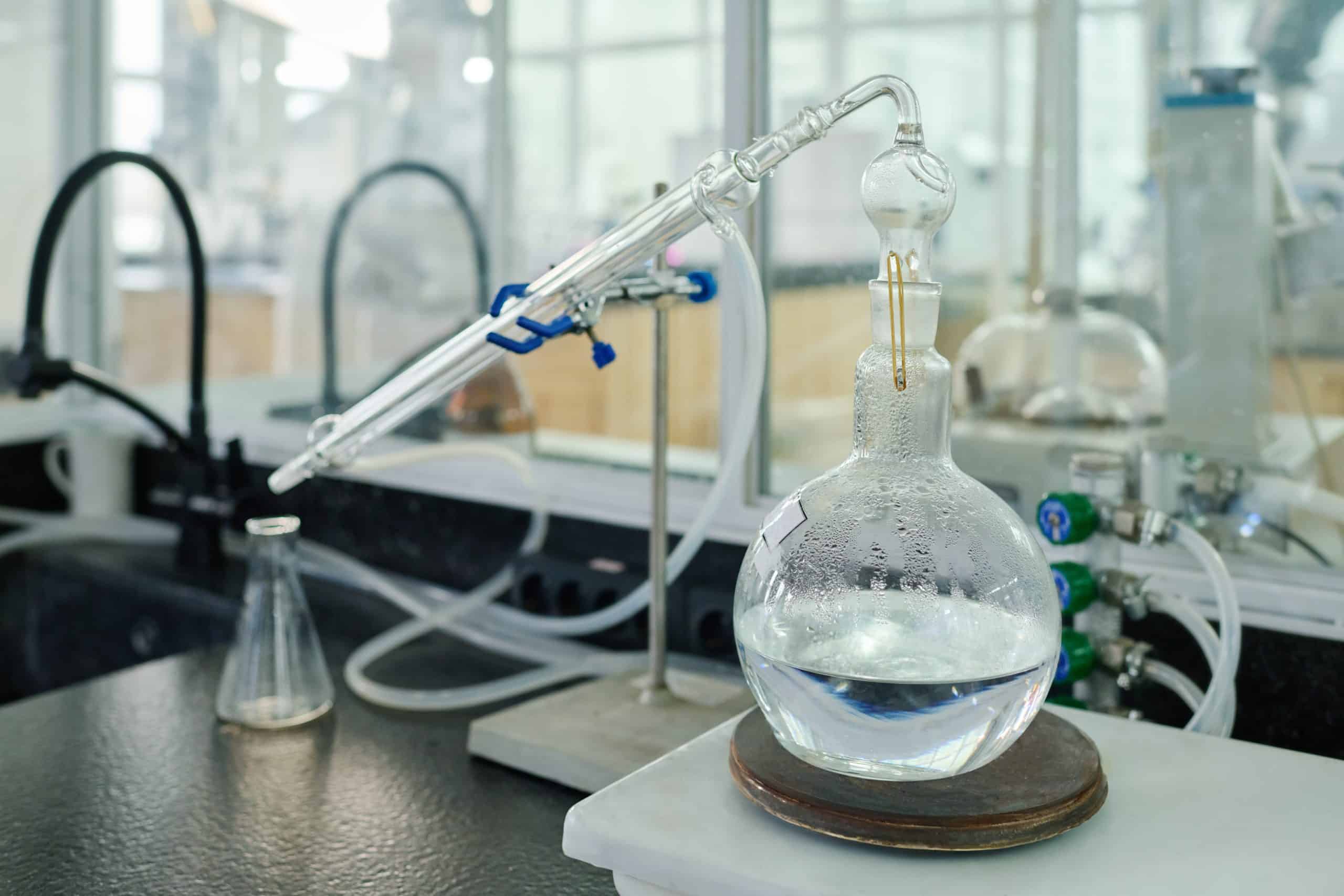The world of botanical extraction is exploding, but the industry is reaching a curious tipping point. Traditional medicine practitioners have been extracting therapeutic ingredients from various plants for centuries, but this extraction usually occurs in simplified ways. In contrast, the extraction industry presents themselves as better providers of these healing constituents, but this claim rests on the assumption that the extraction industry is more efficient.
Efficiency can be measured in several ways, but any extraction method must rely on data to prove its effectiveness. The more data that is collected, the more definitively the advantages and disadvantages to each extraction method appear. Time is of the essence. If extraction companies plan to cement their status as the best providers of extracted products, they need to prove these claims. One study found a way to do exactly that.
Researchers evaluated which technique was better between Soxhlet extraction to hydrodistillation by taking tamarind from the same harvest, and splitting it equally between the two extraction methods. [1] They compared aspects like extraction time, solvents used, yields produced, and quantified the constituents to reach their conclusion. By using the same harvest, they are able to eliminate any variables that could arise from if one process had better or worse organic material. Additionally, the researchers conducting this experiment chose tamarind because of its therapeutic benefits, and because it can be used as a food source. [2][3]
Soxhlet Extraction Results
To conduct Soxhlet extraction, the scientists started with 100 grams of pulverized tamarind seeds and placed them in a thimble holder within the Soxhlet apparatus. [4] They used petroleum ether as a , which was then added to a round bottom flask and heated to temperatures between 30-60°C. Petroleum ether works as a useful solvent because it is both cheap and has a low boiling point, lowering the heat degradation of the botanicals.
The solvent is heated to the point where it evaporates, and the vapors rise through the pulverized tamarind where it absorbs the primary compounds within. As the infused vapors rise, they are transported to a separate chamber within the apparatus where they are cooled. This cooling allows the botanical constituents to separate from the petroleum ether.
From here, the valuable ingredients are collected together, and the solvent is returned to the flask to be reused until the extraction process is complete. This is one cycle within a complete Soxhlet extraction, and, depending on the organic material, a minimum number of cycles must be performed to ensure the plant material is fully utilized. For tamarind, 16 extraction cycles take approximately six to eight hours and are completed when the plant material is clear of any color. [5]
This is obvious with tamarind, as the plant usually has a strong yellow color, which is all transferred to a viscous, yellow-gold remaining oil. To complete the process, the extracted oil is washed in a water bath to remove any lingering solvent. The resulting experiment’s Soxhlet extraction produced 2.5 grams of tamarind oil, giving a yield of 2.5% from the initial 100 grams. This is the biggest advantage Soxhlet extraction provides: this extraction method produces more than 40% more oil than hydrodistillation.
When evaluating the oil itself, this method’s tamarind oil contained 41 distinct chemical compounds, of which only six overlapped with the hydrodistillation method. This means that going beyond the advantage of an increased yield, Soxhlet extraction may also be useful for extracting the other 35 compounds not present with hydrodistillation. There are other advantages to Soxhlet extraction, but it is important to evaluate the hydrodistillation results first to give a sense of perspective between the two techniques.=
Hydrodistillation Results
Researchers used a Clevenger apparatus (HDC) to perform Hydrodistillation and compare the two extraction systems. [6] The use of a Clevenger apparatus allowed the researchers to create a closed system for their extraction, which allowed for an uninterrupted process and the reuse of solvents. This means that, like the Soxhlet extraction, HDC can better utilize its supplies to improve the extraction’s overall efficiency. To perform hydrodistillation, the same pulverized tamarind seeds are placed in a distiller with 800 milliliters of distilled water.
This solution is then heated to 40°C. This lower temperature allows the to happen slowly, and it plays a critical role in the finished product. The rest of the process is similar to Soxhlet extraction. The heated solution is vaporized before moving to a condenser. There, the plant material is separated from the solvent, which can be collected and reused thanks to the recollection via the Clevenger apparatus.
This means the distilled water can be used continuously throughout the extraction, but should not be reused between distillations. Once the extraction is complete, the resulting essential oil is dehydrated with anhydrous sodium sulfate, removing any excess solvent. The entire process takes approximately 3 hours, and resulted in a sample of similar tamarind oil weighing 1.7 grams.
The results present two immediate differences to the oil produced with the Soxhlet extraction. First, it takes approximately half the time to extract the oil, but the yield is also significantly lower. Both of these data points are irrefutable, but they do not provide a complete assessment of the two oils themselves.
In order to fully determine which extraction method is superior, it is necessary to evaluate the quality of the constituents, not just the quantities produced. Thus far, Soxhlet extraction has had an edge when evaluating the numbers of extracted compounds, but hydrodistillation has some key advantages of its own.
Analyzing Which Method is Better
On the surface, the advantages of each system are clear. Soxhlet extraction provides a higher yield, but it takes longer to complete the extraction. When evaluating the extraction times, Soxhlet extraction requires 6 hours to complete the 16 cycles, whereas HDC can be done in approximately 3 hours. This can serve as an advantage and a disadvantage depending on how the extraction company views these factors.
In the same six-hour window, HDC could be performed twice, thus overcoming the problem of producing lower yields from a single extraction. In fact, the same amount of time would produce 40% more oil than Soxhlet extraction if given the same amount of time. However, the downside to this strategy is that running twice the extractions means additional resources will be required, and could increase operating costs overall.
What really sets hydrodistillation apart is the lower temperatures it takes to perform the extraction. This one key variable produces compounds that the researchers determined to be of higher quality than those obtained with Soxhlet extraction. The reason for this is that the organic material’s exposure to lower temperatures helps to protect the compounds from heat degradation, and HDC does so in three distinct ways. First, and most obvious, is that HDC heats the solvent to 40°C instead of the 60°C, so it exposes the pulverized tamarind seeds to lower temperatures. The second comes from the mixture with distilled water.
By mixing the plant material in the water, the botanical material has an additional layer of protective insulation from the heat. Soxhlet extraction exposes the plant material directly to the heated vapors, which can break down the material over time. Finally, since the extraction process can be completed in three hours instead of six, the time exposed to the heat is inherently less.
These three factors lead to the compounds within the essential oil not only being protected, but also being oxidized better than with Soxhlet extraction. Oxidation allows for new functional modifications to be made to the compounds, improving their usage within the body. Specifically, the researchers found a higher concentration of oxygenated monoterpenes, which are not only more fragrant but also have been tied to antibiotic, antifungal, anti inflammatory, and cardiovascular benefits. [8]
This is just one of the 34 distinct compounds found in HDC oil, most of which were deemed of similar caliber. These monoterpenes are one example of many that indicate HDC is better for producing high quality oils in less time. These oils will be more valuable for anyone aiming to utilize the aroma, flavor, or therapeutic benefits tamarind provides.
The authors of this study concluded that the higher quality compounds would be more desired by the market, making HDC a better method than Soxhlet extraction. It is also worth noting that this may not be true for all extraction companies. Just because HDC contains better ingredients doesn’t negate any of the advantages of Soxhlet extraction. Certain producers may choose this extraction based on operating costs, materials available, or to obtain one of the other 35 components that weren’t present in HDC.
The differences between these systems are minor, but the small variables between them ultimately produce dramatically different products. Depending on the desired use of the oil, producers may decide one method over another, but without these valuable data points, they wouldn’t be able to fully assess the advantages of each.
Pros of Soxhlet extraction
- High extraction efficiency
- Wide range of extracted compounds
- Wide range of solvent can be used in an efficient way
- Good for thermally stable compounds
Cons of Soxhlet extraction
- Involves potentially harmful organic solvents
- Time consuming process
- Specialized glassware
- Not suitable for thermally labile compounds
- Not suitable for volatile compounds
Pros of Hydrodistillation
- Simple and inexpensive set up
- Environmentally friendly
- Suitable for volatile compounds
- Selective extraction of water soluble and steam volatile compounds
- Widely used
Cons of Hydrodistillation
- Long extraction time
- Only Suitable for volatile compounds
- Lower extraction efficiency compared to Soxhlet extraction
- High temperatures required
References:
- Fagbemi KO, Aina DA, Olajuyigbe OO. Soxhlet Extraction versus Hydrodistillation Using the Clevenger Apparatus: A Comparative Study on the Extraction of a Volatile Compound from Tamarindus indica Seeds. ScientificWorldJournal. 2021 Dec 2;2021:5961586. doi: 10.1155/2021/5961586. PMID: 34899085; PMCID: PMC8660188.
- Arshad, Muhammad Sajid, et al. “RETRACTED: Tamarind: A diet‐based strategy against lifestyle maladies.” Food science & nutrition 7.11 (2019): 3378-3390.
- Van der Stege, Christine, et al. “Tamarind (Tamarindus indica L.) in the traditional West African diet: not just a famine food.” Fruits 66.3 (2011): 171-185.
- De Castro, MD Luque, and Feliciano Priego-Capote. “Soxhlet extraction: Past and present panacea.” Journal of chromatography A 1217.16 (2010): 2383-2389.
- Roopa, Gullipalli Santhosh, and V. Kasiviswanatham. “Extraction of tartaric acid from tamarind pulp and analysis of the acid composition in leaves.” Int J Stud Res Technol Manag 1.5 (2013): 478-488.
- Elyemni, Majda, et al. “Extraction of essential oils of Rosmarinus officinalis L. by two different methods: Hydrodistillation and microwave assisted hydrodistillation.” The Scientific World Journal 2019.1 (2019): 3659432.
- Baj, Tomasz, et al. “Effectiveness of the deryng and clevenger-type apparatus in isolation of various types of components of essential oil from the Mutelina purpurea Thell. flowers.” Acta Pol. Pharm 72 (2015): 507-515.
- Dias, N., et al. “Oxygenated monoterpenes-rich volatile oils as potential antifungal agents for dermatophytes.” Natural product research 31.4 (2017): 460-464.

